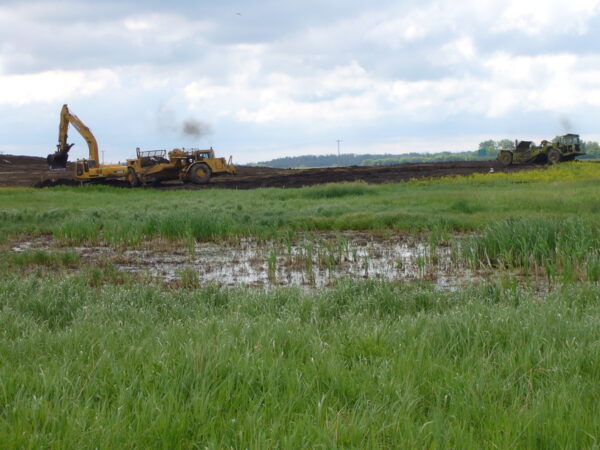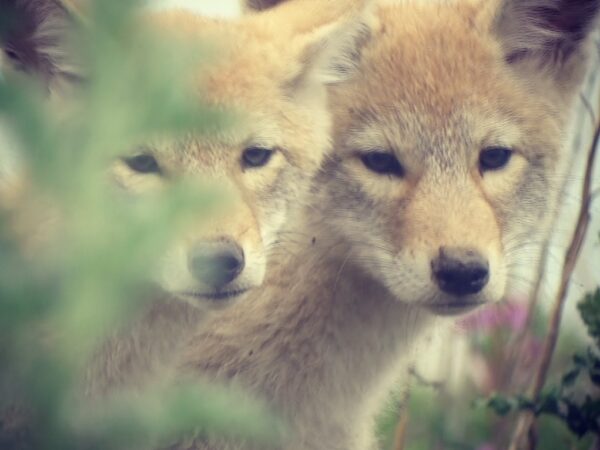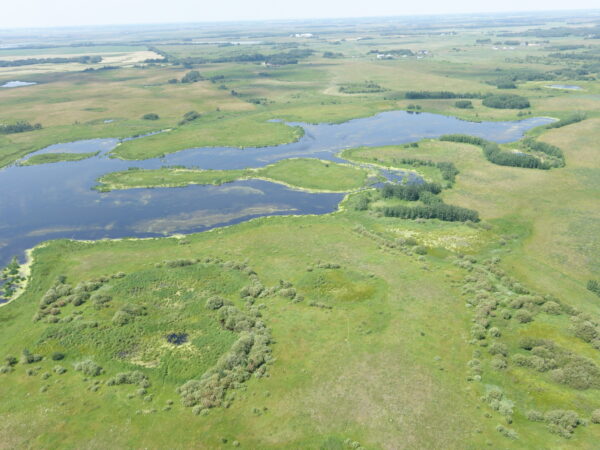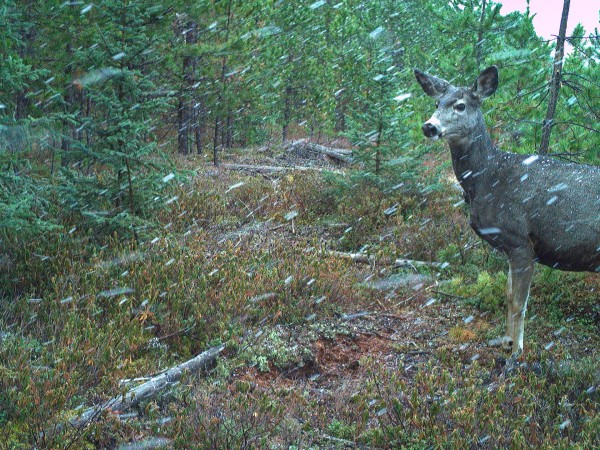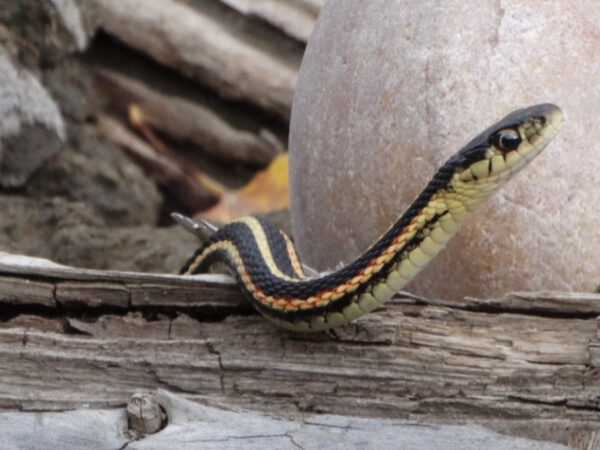“Wapiti” and “elk” are two of the names bestowed upon Cervus canadensis, the second largest species in the Cervidae family. Although the name “elk” is more colloquially used throughout Alberta and the rest of North America, the word was originally a European reference moose (Alces alces), and was probably applied to Cervus canadensis out of ignorance. Although Albertans know exactly what you mean if you use the word “elk” to refer to Cervus canadensis, it is possible that you will leave a European somewhat confused. The name Wapiti, used by the Cree and Shawnee peoples creates an unambiguous distinction between the two. Meaning “white rump”, the name Wapiti highlights one of the most unique and noticeable characteristics of Cervus canadensis, and provides it with a name that is unmistakeable for any of its European cousins.
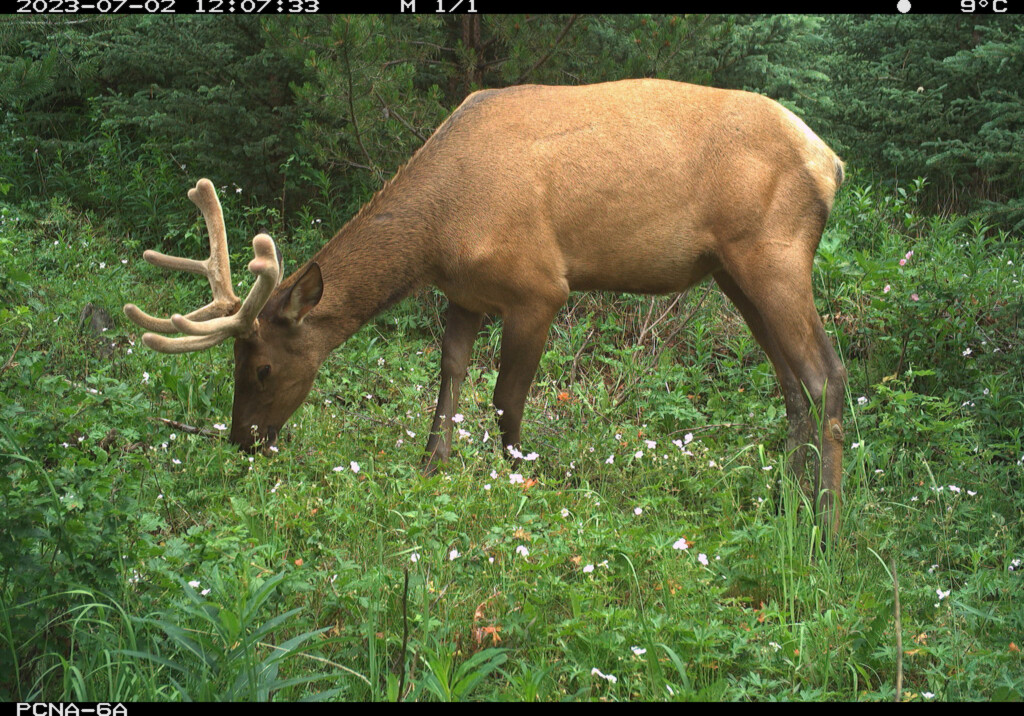
Although they are different species, both the European moose and the wapiti are joined by white-tailed deer (Odocoileus virginianus), woodland caribou (Rangifer tarandus), and mule deer (Odocoileus hermionus) as cervids, which share the characteristic of growing and shedding their antlers cyclically each year. Antlers are one of the most recognizable characteristics of a cervid, and the process of growing and shedding them each year is a quintessential part of a cervid’s success in mating. Antlers are only grown by males except for in caribou, in which antlers grow on both sexes. Female caribou have to defend food sources in the winter, so they grow antlers to be able to do so.
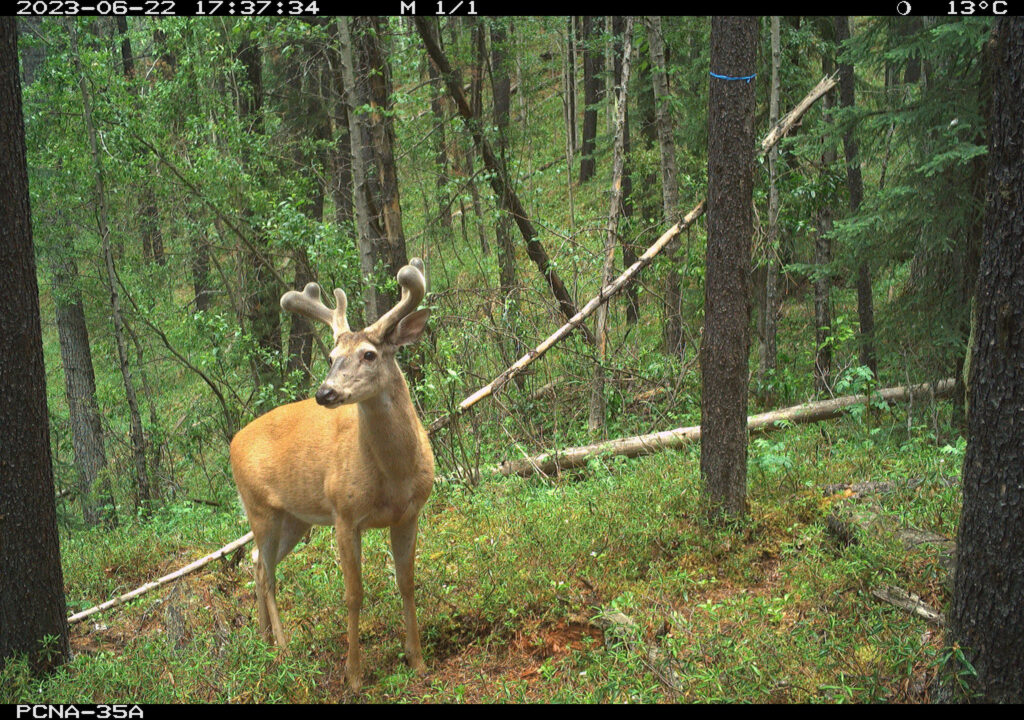
Growing and shedding antlers in cervids is initiated by the annual increases and decreases in sunlight exposure, known as photoperiod. As the Earth orbits the sun, the changing daylight hours influence a cervid’s melatonin levels. This hormonal shift sets off a chain reaction, stimulating the release of hormones such as luteinizing hormone and testosterone, pivotal for antler growth. The process of antler growth is an energetically intensive endeavour, requiring substantial feeding in the spring and summer to support antler growth. While the energy required to grow antlers is high, antlers are imperative to bucks during the mating season. An impressive set of antlers can support a buck in sparring opponents and establishing social dominance, creating a greater likelihood that the buck will mate successfully.
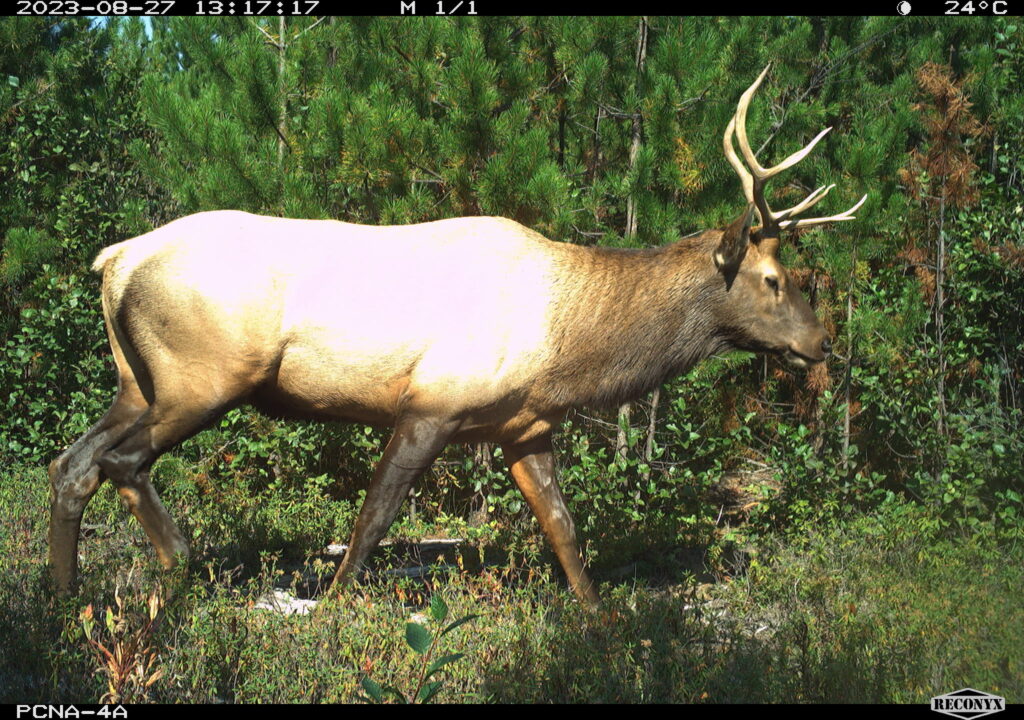
The growth of an antler starts at the base in early spring, with each antler stemming from a permanent outgrowth on a cervid’s head, called a pedicle. As growth continues, the antlers are enveloped in a layer of fuzzy skin called velvet. Antlers in velvet have a softer and rounder appearance than their fully grown counterparts, so finding photos of a Wapiti with beautiful velvety antlers has been one of my favourite parts of analyzing our trail camera photos. Velvet nourishes the growing antlers by supplying blood to them, allowing them to reach their largest size. In late summer, Cervids begin to shed their velvet to reveal fully hardened, sharp, and shiny antlers, prepared for the intense rut season. As winter leads to less sunlight, a cervid’s testosterone level drops, leading its antlers to loosen and eventually drop, normally between the months of December and March. Soon after dropping, spring approaches and the whole cycle repeats again, with antlers generally increasing in size each year as a cervid grows.
Red Velvet was researched and written by Bria Griffin.
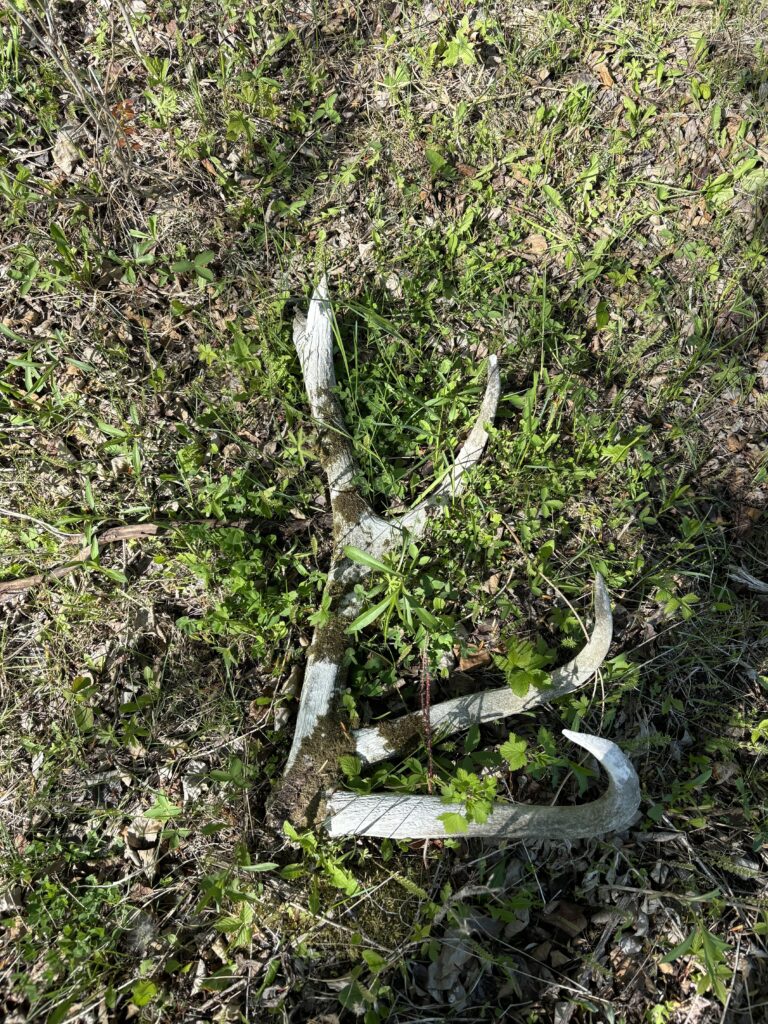
References
Fennessey, P.F. Fisher, M.W. Jopson, N.B. Suttie, J.M. Webster, J.R. “Melatonin in Male Deer- Effects on Seasonal Cycles.” Deernz, deernz.org/public/assets/research/462.pdf. Accessed 24 June 2024.
Mionczynski, John. 17 June 2021, “Wapiti.” Native Memory Project, nativememoryproject.org/animal/wapiti/.
Salwey, Mary Kay. 2005, “Amazing Antlers.” Alaska Department of Fish and Game, www.adfg.alaska.gov/index.cfm?adfg=wildlifenews.view_article&articles_id=175.
